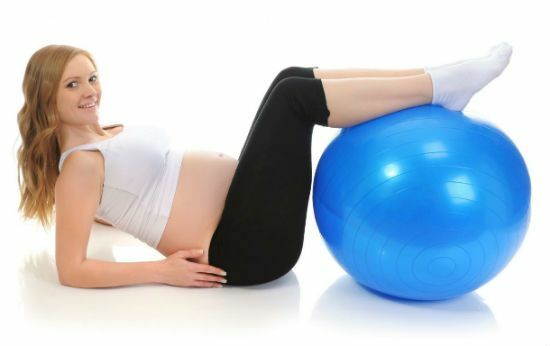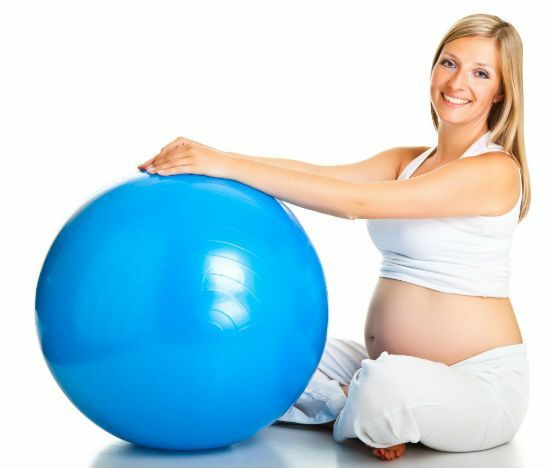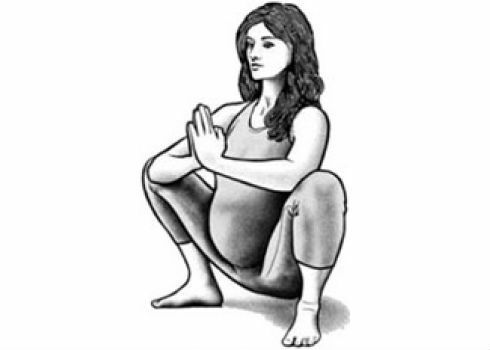
American gynecologist Arnold Kegel half a century ago developed a set of exercises aimed at strengthening the muscles of the pelvic floor. The fact is that many women during pregnancy suffer from involuntary urination. This is due to the pressure of the enlarged uterus and fetus on the urethra. According to the obstetrician, the creator of this practice, the cause of this ailment is the weak muscles of the perineum.
- Technique for performing
- Technique for performing
- Kegel complex for pregnancy
- Exercise 1 - Hold
- Exercise 2 - Wave
- Exercise 3 - Elevator
- Exercise 4 - Goalkeeper
- Exercise 5 - Achilles tendon extension
- Exercise 6 - Shiva
- Exercise 7 - Madonna
- Indications
- Contraindications
Complex Kegel during pregnancy includes exercises that develop this group of muscles. Gymnastics has a huge effect in eliminating uncontrolled urination during the period of gestation and helps prepare for the upcoming birth and prevent tissue ruptures during the birth process.
Technique for performing
The system of exercises is based on alternating tension and weakening of the muscles of the pelvic floor. Classes during pregnancy should be carried out on the emptied bowel and bladder. The load and the duration of training must begin with a minimum, gradually increasing. Especially it concerns those at whom muscles of a pelvic floor are weakened strongly enough. The main thing is not to achieve the ability to compress muscles with full force, but to learn to control this process on your own and to feel your body.
You should train from an early date, doing gymnastics every day. The first classes are spent lying down. Having already learned to control muscles, you can practice standing or sitting. For an initial workout, try alternately compressing the perineum. An effective way to understand the technique of performing - during urination try to stop this process. At this point, certain muscle groups are being cut - over which they will have to work. From 16-18 weeks from the exercise lying should be abandoned.
To achieve maximum effect, lessons should be regular and strictly following the instructions. Remember, the main goal of gymnastics is to develop the flexibility and plasticity of muscles. Keep track of the sensations and control the tension you need all the time. Before classes - consult a doctor.
to contents ^Kegel complex during pregnancy
to contents ^Exercise 1 - Hold

Take a horizontal position, place a flat pillow under the head and shoulder blades. Now bend your knees and spread them apart - take a pose like during childbirth. Try to completely relax the body. Squeeze the muscles of the perineum, keeping in tension for 10 seconds. Relax and relax. Repeat 8-10 times. Increase the number of approaches with subsequent training, up to 30 times.
to contents ^Exercise 2 - Wave

The starting position is lying on the rug. Put your feet on the bed or fitball. Alternately, strain and relax the muscles of the pelvic floor at a rapid pace. Do this in such a sequence - start to squeeze the vagina, smoothly moving to the muscles of the anus. Movements must be wavy. Relax them in the reverse order.
to contents ^
Exercise 3 - Elevator

If you look at the anatomy, the vagina is a pipe consisting of adjacent rings. In the process, you need to alternately strain each segment of the vagina, moving up, and then down. In sitting position, squeeze the lower part of the vagina and hold this position for a couple of seconds, then go higher, leaving the lower segment in tension. So gradually you will stretch the muscles of the entire vagina. Do not forget to stop at each stage. Relax the muscles in the same way, going down.
to table of contents ^Exercise 4 - Goalkeeper

loading. ..
This exercise is aimed at learning to push right during delivery. It is performed while sitting. Knees should be bent and set aside, or cross your legs in a "lotus" pose. Hold your breath and try to gently taut as if exposing the muscles of the vagina. Inhale, shorten the muscles. Repeat several times. To control the process, put your palm to the crotch - tight muscles you can easily feel with your fingers.
to contents ^Exercise 5 - Achilles tendon extension

The starting position is vertical. Place your feet at a distance of two feet apart. The bottom line is squatting for stretching the Achilles tendons. Try to squat down, not taking the heel off the floor. The back should be kept evenly, and the weight of the body should be transferred to the heels. To insure and control the smooth retention of the back, you need to ask your relatives to help, or do this by gently resting on the wall.
In the first few sessions, you may not be able to sit down. If during the squatting the toes, or the heels involuntarily rise, or the weight moves to the inside of the foot, this indicates a poor stretching or insufficient length of the tendons. This gymnastics also helps to smooth the birth canal during pregnancy.
to table of contents ^Exercise 6 - Shiva

Lie on your back, put your feet shoulder width apart. Press the feet to the floor, place your hands in the palms parallel to the body. Raise the pelvis, as far as you can, while the muscles of the buttocks and back should work. With raised hips, stretch the muscles of the pelvic floor - do a few compressions and relax.
loading. ..
back to contents ^
Exercise 7 - Madonna

Sit on the mat, bend your knees under yourself and lower your buttocks on your heels. Straining the press, lift the hips. In this position, squeeze the intimate muscles. Hold the tension for a few seconds, then relax and lower the pelvis. Repeat the exercise 5-10 times.
to contents ^Indications
Complex Kegel during pregnancy are aimed at strengthening the muscles of the pelvic floor. Occupations of imbilding( another name of this gymnastics) help prevent venous congestion, so are shown to women prone to blood clots. It is worth remembering that the period of bearing a child can be complicated by various pathologies.
to table of contents ^Contraindications
Before starting, make sure there are no contraindications:
- severe toxicosis;
- diseases accompanied by febrile conditions;
- gestosis;
- recent surgery or injury;
- in the presence of inflammatory processes in the genitourinary system;
- for exacerbation of cardiovascular diseases;
- uterine bleeding;
- presence of benign or malignant tumors;
- threat of termination of pregnancy;
- discomfort during classes.
